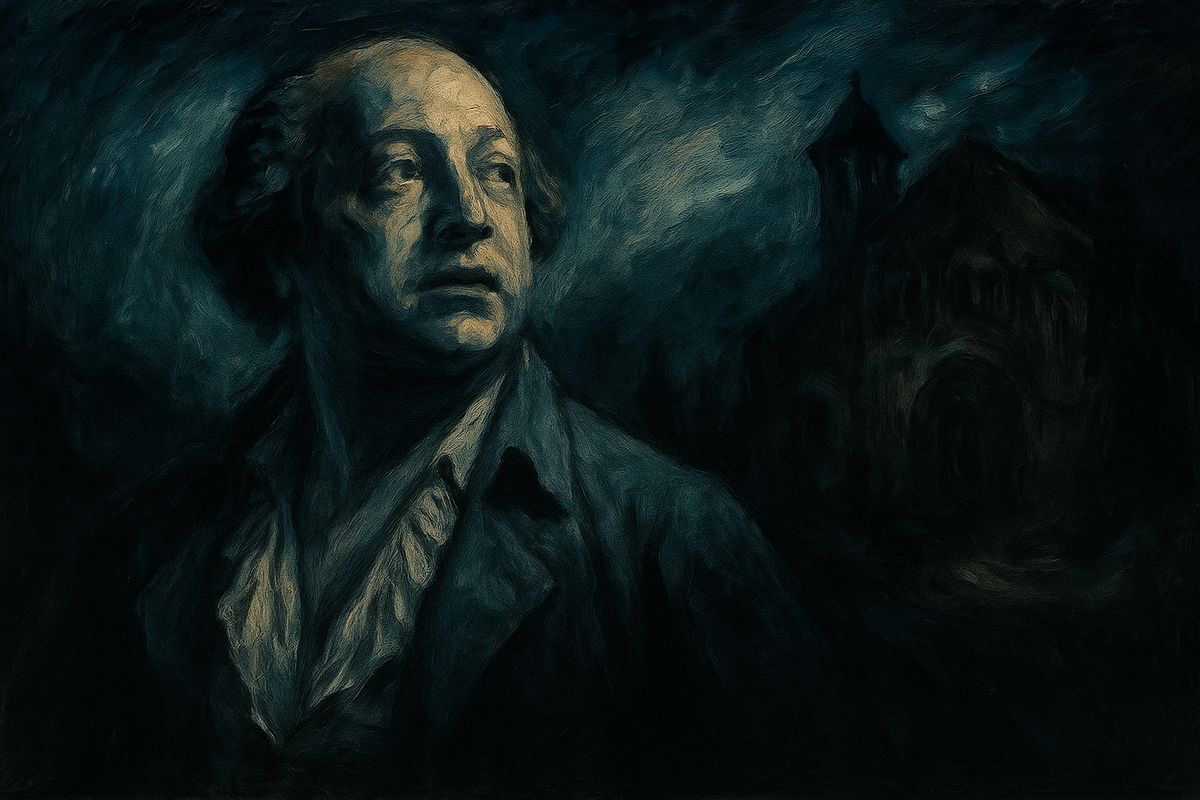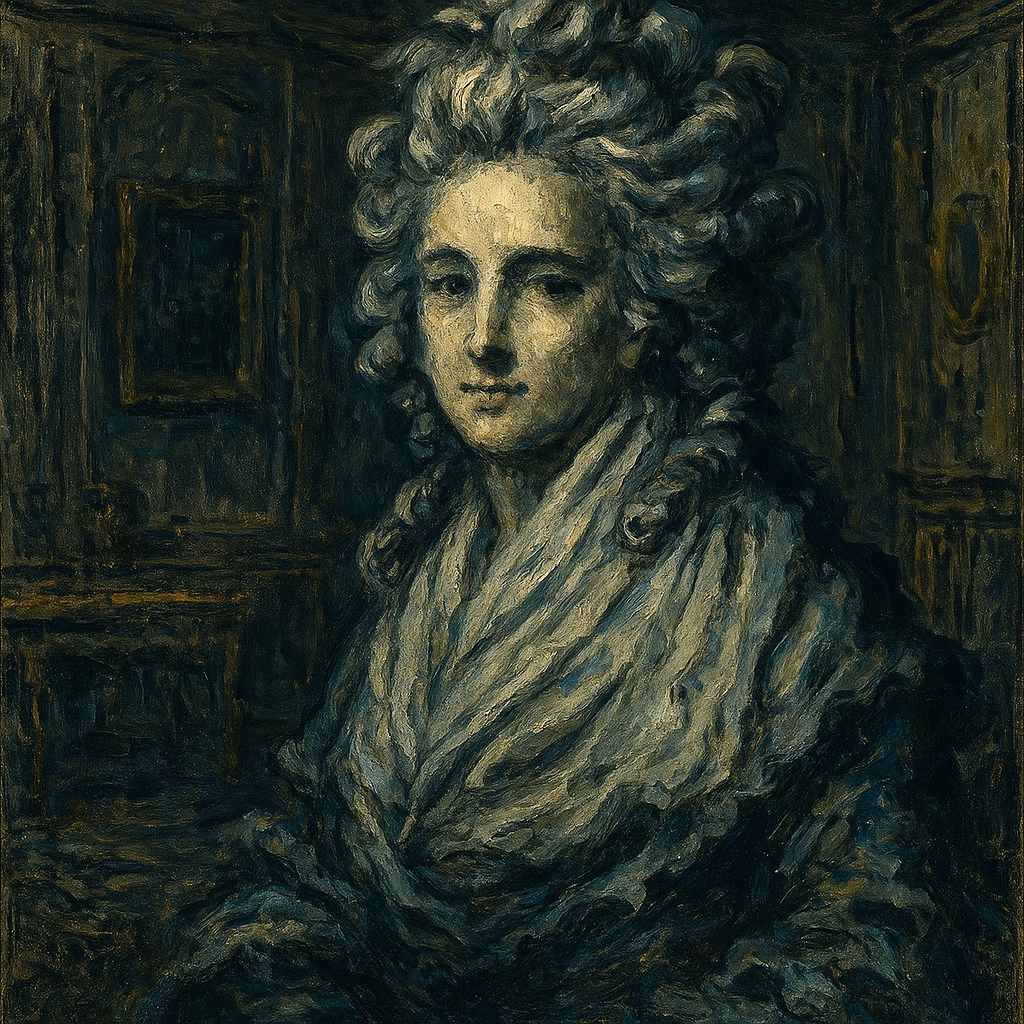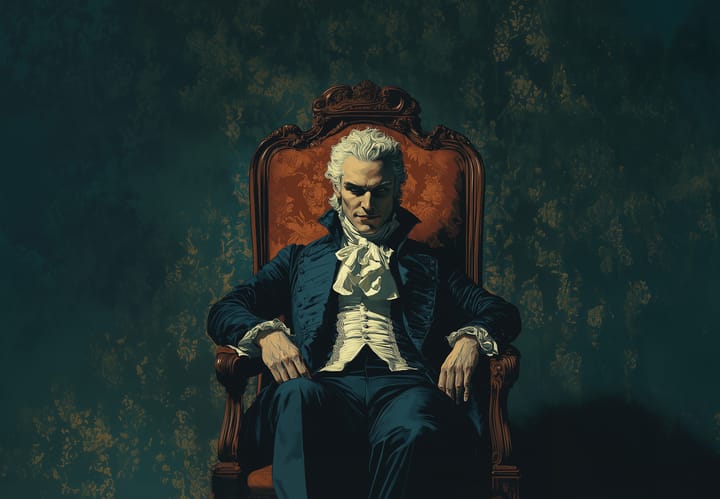The Many Masks of Cagliostro: Alchemist, Trickster, Prophet of Light

Alessandro Cagliostro remains one of the most baffling and controversial figures of the 18th century. Born Giuseppe Balsamo in Sicily, he rose from obscurity to mingle with nobles and royals across Europe as an alchemist, healer, and occultist. For generations, he was dismissed as nothing more than a shameless imposter – Thomas Carlyle famously dubbed him the “Quack of Quacks” – and his name became synonymous with charlatanry. In recent years, biographers and scholars have revisited Cagliostro’s life with a more sympathetic eye, seeking to rehabilitate his image. The truth, as usual, lies somewhere between the diabolical caricature and the idealized legend. What follows is a comprehensive narrative of Cagliostro’s extraordinary journey – from his humble origins and wandering years, through his exploits in secret societies and royal courts, to the scandals and trials that marked his downfall – all viewed with an eye toward understanding the man behind the myth.
Origins in Palermo: From Giuseppe Balsamo to “Count” Cagliostro
Giuseppe Balsamo was born on June 2, 1743, in the poor alleys of Palermo, Sicily. His family was of no distinction – his father, a small-time tradesman, went bankrupt and died when Giuseppe was an infant. This left the boy to grow up as a streetwise urchin, scraping by in a rough neighborhood (the Albergheria quarter of Palermo) and receiving only a basic education. Local gossip even suggested the Balsamos had foreign (possibly Jewish or Moorish) blood, a stigma in 18th-century Palermo that consigned them to society’s margins. Surrounded by poverty and prejudice, young Giuseppe learned early how to survive by his wits. By his teens, Balsamo had gained a reputation for mischief and cunning. He briefly enrolled at a monastery (some say to study religion or medicine), but he was more interested in the forbidden “sorcery” lore that monks secretly preserved. It was around this time that he launched his first famous scam – an episode that offers a glimpse of the audacious showman he would become. Balsamo befriended a wealthy but gullible goldsmith named Marano and confided in him a tantalizing secret: Giuseppe had discovered an ancient treasure hidden in a cave outside Palermo, guarded by evil spirits. For a fee of “sixty ounces of gold,” he offered to lead Marano to the spot and even hire a priest to perform the necessary exorcism of the demons. Marano, blinded by greed and superstition, paid the hefty sum. One moonless night the treasure-hunt party – Balsamo, the goldsmith, a priest, and a hired accomplice – crept to the cave. There, Balsamo staged an elaborate occult drama: Latin incantations echoed as a magic circle was drawn on the ground, when suddenly the night erupted with “a flash and splutter of blue fire” and the stench of sulfur. In that instant, wild howls rang out and “demons” leapt from the darkness – actually goat-herds that Giuseppe had paid and costumed with grotesque paint. The terrified Marano dropped his spade and fled for his life. In the chaos, Balsamo and his confederates also bolted – taking with them Marano’s gold. By the time the duped goldsmith realized he’d been tricked, the young sorcerer was long gone. Humiliated and furious, Marano swore vengeance and pressed charges with local authorities. With both lawsuit and lynch mob looming, Palermo was no longer safe for Giuseppe. In 1760, still only 21, he “fled” his hometown to escape the consequences of this audacious fraud.
Thus began the transformation of Giuseppe Balsamo into Alessandro, Count of Cagliostro. In his exile, the resourceful Sicilian wandered through the Mediterranean and beyond. Later in life, Cagliostro would spin a highly romantic yarn about these early wandering years. According to the fantastical “autobiography” he gave to the Inquisition, he wasn’t simply hiding from the law – he was traveling the world under the patronage of mysterious benefactors. He claimed to have been whisked away to the Middle East, adopting the name “Acharat” and living in luxury with the Grand Mufti of Medina, then studying alchemy in Mecca for three years as the pet of the Arabian sherif. From Egypt to Rhodes, from Persia to perhaps even India, the young adventurer supposedly journeyed through fabled lands acquiring arcane wisdom. He boasted of an appointment at the court of the Grand Master of the Knights of Malta, where he first assumed the title of Count Cagliostro and was treated as a noble guest. By his own account, he had visited “the chief cities of Africa and Asia”, then all the great capitals of Europe – Spain, Portugal, Holland, Russia, Poland – making the acquaintance of princes and luminaries everywhere he went. It is a sweeping, Scheherazade-style tale of adventure, almost too good to be true. And indeed, historians doubt much of it. These stories came to light in the confessions and memoirs published (and likely embellished) by the Vatican after Cagliostro’s final trial. The “Vie de Joseph Balsamo” produced by the Inquisition painted him as a globe-trotting arch-impostor, but even Cagliostro’s supporters admit he was prone to exaggeration and mystification about his past. How much of his own legend he invented is still debated. As one biographer notes, it is hard to imagine that a man fighting for his life before the Inquisition would concoct outright lies that could be easily disproven. Perhaps Balsamo truly did venture abroad and pick up a smattering of occult lore in “Mecca and Medina”, as implausible as it sounded to Europeans at the time.
What is certain is that by the mid-1760s, Giuseppe Balsamo had vanished into a new identity of his own creation. He re-emerged in Italy a few years later as Alessandro, Count di Cagliostro – an elegant cosmopolitan with obscure origins, presenting himself as a learned alchemist and thaumaturge. The choice of name was no accident: “Cagliostro” may have come from a distant relative on his mother’s side (a family of that name in Messina), but it also had an exotic, aristocratic ring that suited his purposes. During these years he met the person who would become his lifelong companion (and sometimes accomplice): Lorenza Feliciani, a striking young Roman woman whom he married in 1768.

Lorenza, whom Cagliostro affectionately called “Serafina,” was just 14 and famed for her beauty. Together, the couple embarked on an itinerant life across Europe, living by their wits and charms. According to later accounts, the count and his wife survived through a mix of occult entrepreneurship and social seduction – selling quack medicines and magical talismans, telling fortunes, and at times relying on the “generous presents” of Lorenza’s wealthy admirers. In other words, Cagliostro may not have hesitated to let his wife’s beauty bewitch potential patrons if it kept the pair in comfort. It was a rollicking vagabond existence, moving from city to city one step ahead of debt or scandal. During these wanderings, Cagliostro picked up bits of genuine knowledge amid the chicanery. He learned chemistry and medicine enough to concoct potions; he studied languages (later surprising Parisians by conversing in Arabic and Greek); and he absorbed esoteric teachings from cabalists, healers, and Freemasons wherever he could find them. All of these threads would later weave into the peculiar tapestry of mysticism, medicine, and magic that he presented to the world.
Occult Celebrity and Freemason of Mystery
By the late 1770s, Cagliostro had evolved from a small-time trickster into a phenomenon of high society. After brief sojourns in Spain and perhaps England, he began to attract attention in major European cities as a mesmerizing healer and occultist. One of Cagliostro’s turning points was London, where he arrived around 1776. In London, he was exposed to the thriving scene of Freemasonry and Rosicrucian occult circles. He was initiated into a conventional Masonic lodge in Britain – an experience that fired his imagination. Here, amidst gentlemen mystics and alchemists, the exiled Sicilian alchemist found both camaraderie and a blueprint for a new kind of spiritual enterprise. Cagliostro would soon develop his own twist on Freemasonry: the Rite of Egyptian Freemasonry. This was an avant-garde Masonic order he founded, purportedly based on secrets taught to him in the East. Unlike traditional lodges, Cagliostro’s “Egyptian” rite was open to both men and women (quite radical in that era) and promised nothing less than ancient wisdom, physical rejuvenation, and direct communication with the spiritual realm. The rituals were an intoxicating blend of scientific-sounding experiments and mystical pageantry. Sessions might involve alchemical demonstrations, magnetic healing passes, invocations of angels, or scrying (clairvoyant visions) guided by Cagliostro’s wife Serafina, who often served as his chief medium. Dressed in flamboyant costumes – Cagliostro styled himself as the “Grand Cophta” or High Priest – the couple dazzled audiences with what seemed like miracles. In an age hungry for both reason and mystery, this mix of Enlightenment-era science and oriental mysticism was irresistible. By all accounts, Cagliostro “went down a storm” among the elite; bored aristocrats and seekers of truth alike flocked to his Egyptian lodges.
In the early 1780s, Cagliostro’s fame (and notoriety) crescendoed. He and Serafina crisscrossed continental Europe, from Germany to the Netherlands, Italy to the Polish-Lithuanian Commonwealth, leaving trails of astonishment. In Courland and Poland, he astounded nobles with displays of clairvoyance – reportedly foretelling events and reading minds with uncanny ease. In St. Petersburg, however, the reception was chillier: Empress Catherine the Great, a skeptic of mystics, derided Cagliostro and barred him from her court, seeing him as just another charlatan. (Catherine later wrote satirical skits lampooning charlatans, and a character suspiciously like Cagliostro appears in her writings.) Even so, legends grew that in Russia Cagliostro had treated the poor, only to be sabotaged by jealous officials: one rumor claimed he failed to cure a bald officer’s hair, a blind man’s eyes, and a deaf man’s ears – stories spread to discredit him. Cagliostro’s supporters insisted these were malicious inventions, noting that “a few months later Cagliostro was performing the most marvellous cures” with patients coming from all over Europe. In truth, wherever Cagliostro went, opinions were sharply divided. Admirers saw him as a wonder-worker devoted to healing and enlightenment; detractors saw only an extravagant fraud preying on credulity.
One place where his star shone especially bright was Strasbourg in the French province of Alsace. In 1780, Cagliostro arrived in Strasbourg at the invitation of local Masons, and his reputation as a miraculous physician preceded him. He had barely set up residence when the sick and curious began arriving in droves. True to his lore, Cagliostro “cured the poor… without fee or reward,” freely dispensing remedies to indigent patients and even treating ill soldiers and prisoners pro bono. Contemporary chroniclers confirm that at Strasbourg “strangers…came either to see him or to consult him” from far and wide. The city’s streets became crowded with every manner of supplicant – peasants on crutches, veterans with wounds, society ladies with nervous ailments – all seeking the famous healer. By this time Cagliostro had developed a signature elixir (his “Egyptian” potion for longevity) and a set of therapeutic techniques that today we might partly attribute to mesmerism (hypnotic suggestion) or other placebo effects. Whether by exotic medicine or sheer charisma, many walked away feeling genuinely improved, further fueling his fame. Strasbourg also brought Cagliostro into the orbit of the man who would link his fate to the French royal court: Cardinal Louis de Rohan. Rohan was the Prince-Bishop of Strasbourg and a grandly connected aristocrat – and he was utterly entranced by Cagliostro. The Count and the Cardinal became fast friends. Rohan was a credulous but powerful patron; through him, Cagliostro’s influence penetrated the highest circles of France. It was later said that Cagliostro had “considerable influence over the Cardinal”, advising him on matters spiritual and personal. For instance, one anecdote has Rohan excitedly showing courtiers a magnificent diamond that “he claimed Cagliostro had grown for him” by alchemical means – a bold illustration of the Count’s reputed powers. With Rohan’s endorsement, Cagliostro moved in 1785 to Paris, the center of Europe’s intellectual and social life, and there he founded a lodge of his Egyptian Freemasonry. Parisian society, ever eager for novelty, welcomed him as an exotic celebrity. His séances and healing salons became the rage of fashionable society in Paris. Even as the Enlightenment’s leading minds (like Goethe, who met Cagliostro in 1780, and declared him an imposter) scoffed, the elite of Paris – counts and countesses, even princes – attended Cagliostro’s nocturnal “mysteries” in hopes of glimpsing a miracle or at least an entertaining thrill. Yet with fame came suspicion. The established authorities of medicine, religion, and Masonry all began to regard Cagliostro as a dangerous interloper. Many orthodox Freemasons were uneasy with his unorthodox Egyptian Rite; indeed, in Strasbourg some lodge members were perturbed to find that Cagliostro had “thrown off the mantle of fellow Mason” and was proclaiming himself a grand master of a new order. Some branded him a heretic or Illuminist in disguise. Parisian wags lampooned him in pamphlets, doubting the genuineness of his cures and insinuating darker motives. Still, others defended Cagliostro’s character by pointing out that “after all he only did good” – if his powers were supernatural, “he must be a good, rather than an evil, genius,” reasoned one observer, given his charitable deeds. This debate over Cagliostro’s true nature – benefactor or fraud? – was about to explode in a very public way, through a scandal that shook France on the eve of the Revolution.
The Diamond Necklace Affair (1785–1786)
In the summer of 1785, Cagliostro’s name became entangled in one of the most sensational scandals of pre-revolutionary France: the Affair of the Diamond Necklace. Although he was not involved in the swindle itself, his proximity to one of the key figures—Cardinal Louis de Rohan—led to his arrest and eventual expulsion from the country.
At the center of the affair was an extravagant diamond necklace, valued at 1.6 million livres, originally commissioned for Madame du Barry, the mistress of Louis XV. After the king’s death, the jeweler Charles-Auguste Böhmer was left with a costly piece no one wanted. Desperate to sell it, he became the unwitting pawn in an elaborate con carried out by Jeanne de La Motte, a woman with noble ancestry but a scandalous reputation.
La Motte convinced Cardinal de Rohan—a powerful cleric eager to regain favor at court—that Queen Marie Antoinette secretly wished to purchase the necklace but wanted to do so discreetly. To bolster the deception, La Motte forged letters in the Queen’s name and even arranged a late-night meeting in the gardens of Versailles, where Rohan spoke with a prostitute dressed as the Queen. Fooled by the performance and eager to please, Rohan agreed to facilitate the purchase. When the scam unraveled and the Queen publicly denied any involvement, the fallout was swift and brutal.
Cagliostro, who had been living in Rohan’s palace as a spiritual advisor and healer, was arrested shortly after the Cardinal. Although no credible evidence linked him to the plot, his closeness to Rohan and his reputation as a mysterious foreign occultist made him a convenient target for suspicion. Jeanne de La Motte later accused him of manipulating Rohan or even being involved in the scheme—likely an attempt to deflect blame—but the charges against him remained vague and unsubstantiated.
In August 1785, Cagliostro was imprisoned in the Bastille. He spent nearly nine months there, protesting his innocence. The trial that followed in early 1786 captured public attention across Europe. Among the accused were Cardinal de Rohan, Jeanne de La Motte, her accomplices, and Cagliostro—each with wildly different stories and motives. Cagliostro presented a written defense to the court, asserting his loyalty to France and distancing himself from the affair entirely. His argument held: no concrete evidence tied him to the necklace or the fraud.
In May 1786, the Paris Parlement acquitted both Cardinal Rohan and Cagliostro. Jeanne de La Motte, however, was found guilty and sentenced to public whipping, branding, and imprisonment. The court’s decision sparked public jubilation. Many saw it as a triumph of common sense over court intrigue and took it as an indirect blow to the already unpopular Queen. The crowds who gathered to cheer for Cagliostro were less celebrating him as a hero than using his acquittal to express resentment toward the monarchy.
According to some accounts, thousands gathered at his residence in the Rue Saint-Claude to welcome him home. The episode turned Cagliostro into a folk figure—celebrated by the people, distrusted by the establishment. Alarmed by his growing popularity and the symbolic weight of his acquittal, the government acted quickly. The very next day, Cagliostro was expelled from France by royal order. He and his wife Serafina were given a brief time to prepare and then forced to leave the country.
By the summer of 1786, Cagliostro was once again in exile—cleared by the courts but politically tainted. Though the Diamond Necklace Affair was never his plot, it cast a long shadow over his reputation. Before leaving Paris, he issued a public letter titled To the French People, framing himself as a victim of prejudice and injustice. Though legally vindicated, the public label of “impostor” clung to him more than ever.
In the months that followed, French newspapers and pamphlets—some with official backing—depicted him as a dangerous foreign mystic, a spy, or a fraud. His image, once dazzling, had become radioactive. The whirlwind that had lifted him to celebrity now began the long process of tearing him down.
The Inquisition and Imprisonment: Cagliostro’s Final Act
For the next few years, Cagliostro wandered once more. He returned to England in 1787, where he attempted (unsuccessfully) to establish a Masonic lodge and publish his rebuttal of the Diamond Necklace accusations. He then drifted through Switzerland and Germany, occasionally finding supporters but more often hounded by the growing notoriety that preceded him. In one town in the Austrian Tyrol, Roveredo, he tried to lay low and practice medicine quietly, even founding a small Egyptian Masonry lodge there. But his alias could not be kept secret for long. He was recognized and denounced as a “quack”. The Holy Roman Emperor Joseph II (an Enlightenment ruler but no friend to occult freemasons) personally signed an order expelling Cagliostro from his realms. By the late 1780s, the Count’s options were running out. In 1789, for reasons still puzzling to his friends, Cagliostro decided to return to Rome – the very heart of the Catholic world that had already condemned Freemasonry as heresy. Some speculate that he was homesick for Italy; others that he naively hoped to win favor by converting the Pope to his mystical ideas. It proved a fatal miscalculation. Within a few months of his arrival in Rome, Cagliostro’s activities (he was reportedly preparing to set up an “Egyptian” lodge there) drew the attention of the Holy Inquisition. The Inquisition had long kept dossiers on him, and now it moved swiftly. In December 1789, Cagliostro was arrested by papal authorities and locked in the Castel Sant’Angelo. Even more shockingly, his wife Serafina betrayed him at this moment. Perhaps hoping for leniency, Lorenza cooperated with the inquisitors and denounced her husband as a heretic, magician, and Freemason. Her testimony, along with confiscated papers and ritual paraphernalia, provided the Inquisition with ample ammunition.
After nearly a year in secret proceedings, the verdict came in 1791: Cagliostro was found guilty of heresy. In the eyes of the Church, his masonic-egyptian “secret society” and occult practices were an unspeakable offense. The original sentence was death by execution – a grim fate for the erstwhile Count. However, Pope Pius VI intervened at the last moment, commuting the penalty to life imprisonment. It was said that the Pope preferred to show mercy and avoid creating a martyr. Cagliostro’s works and writings (such as they were) were ordered to be burned, and he was to be held in solitary confinement for the rest of his days. The place of incarceration was the remote fortress of San Leo, a forbidding cliff-top stronghold in the Apennine Mountains of papal Italy. There, in a tiny stone cell known tellingly as the “Infamous Pit”, Alessandro Cagliostro spent his final years. The cell had only a narrow slit for light and was so confined that he could barely move; it was essentially a dungeon. According to one account, he attempted to escape in 1794 but was caught – after which his captors chained him and possibly even bricked up the cell entrance. Cut off from the world, Cagliostro fell ill. On August 26, 1795, he died in San Leo at the age of 52. The cause of death was reported as apoplexy (stroke), though lurid rumors claimed poison or foul play. His wife Lorenza, who had been sent to a convent, lived on until 1794, dying in penury and remorse. So ended the life of Count Cagliostro: in darkness and silence behind prison walls, far from the courts and salons that once celebrated him.
Legacy and Reassessment
After his expulsion from France in 1786, Cagliostro resumed his wandering life. He spent time in England, where he tried—without success—to defend himself in print and establish his Egyptian Rite of Freemasonry. He then moved through Switzerland and various parts of the German-speaking world, attracting some attention but often finding his path blocked by growing suspicion and notoriety.
In Roveredo, a town in the Austrian Tyrol, he attempted to settle quietly, continuing his medical practice and organizing small Masonic gatherings. But his reputation caught up with him. Local authorities, alarmed by his presence and his unorthodox activities, alerted Vienna. Emperor Joseph II, already wary of esoteric societies and secret rites, ordered Cagliostro expelled from the Habsburg territories.
By the end of the 1780s, Cagliostro’s options were narrowing. In a move that baffled many who knew him, he returned in 1789 to Rome—the very seat of the Catholic Church, which had already condemned Freemasonry as heretical. Some have suggested he hoped to reconcile with Church authorities, others that he simply longed for his homeland. Whatever the reason, it proved disastrous.
Within months, the Roman Inquisition, which had long kept a file on him, took action. In December 1789, Cagliostro was arrested and imprisoned in the Castel Sant’Angelo. The charges were severe: heresy, sorcery, and the promotion of an unauthorized Masonic order. During the investigation, the Inquisition seized Masonic documents and ritual objects, which they used to build their case.
One of the most painful blows came from within. His wife, Lorenza Feliciani—known as Serafina—cooperated with the inquisitors. Possibly hoping for mercy or under duress, she provided testimony that portrayed Cagliostro as a dangerous heretic and deceiver. Her statements became part of the case against him.
After nearly a year of secret proceedings, the trial concluded in 1791. Cagliostro was found guilty of heresy and promoting forbidden doctrines. The initial sentence was death. However, Pope Pius VI commuted the penalty to life imprisonment. Perhaps the Pope wished to avoid making a martyr out of a man whose notoriety was already widespread.
Cagliostro’s writings, papers, and symbolic tools were ordered destroyed. He was transferred to the fortress of San Leo in the Apennine mountains—a remote and imposing prison under papal authority. There he was confined in a cell known as the fossa or “pit”: a small, stone chamber with barely enough space to stand, a single slit for air, and no contact with the outside world.
Accounts of his final years vary. Some reports claim he attempted an escape in 1794, only to be recaptured and more harshly restrained. He reportedly fell ill in the months that followed. On August 26, 1795, Alessandro Cagliostro died at the age of 52. The official cause was listed as apoplexy (stroke), though—as with much of his life—rumors of poison and conspiracy lingered.
Lorenza, sent to a convent after her cooperation with the Church, lived on until 1794. She died in obscurity, her final years marked by hardship and, according to some sources, regret.
Thus ended the life of Count Cagliostro: alone, in a stone cell, far from the glittering salons and Masonic halls where he had once performed his mysteries. He died stripped of his titles and claims, but not of the legend that would continue to follow his name.




